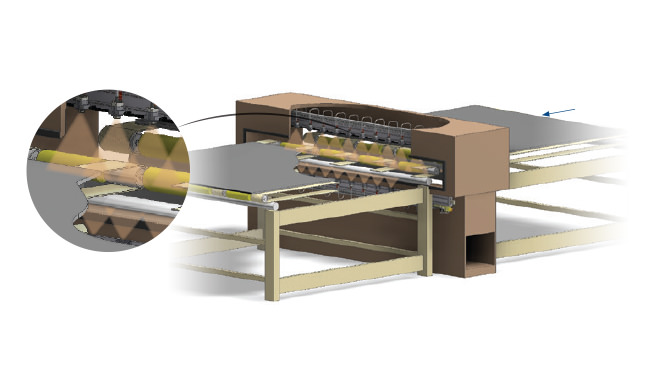Automotive Company Reduces Daily Oil Usage by 70% with Automated Spray System
Automotive Company Reduces Daily Oil Usage by 70% with Automated Spray System
Problem:
An automotive company needed to lubricate metal blanks prior to stamping a variety of parts, including Class A exterior pieces. It was using air atomizing spray guns to apply lubricating oil, which resulted in several issues. Narrow fan patterns caused inconsistent oil application on areas of the sheet metal, while the use of compressed air led to overspray on other sections.
To help eliminate these issues, Mark One Corp., an OEM, required a system that reduced the annual amount of oil used by 25%, did not use compressed air, and was easy to install and intuitive for its end-users.

Solution:
Following successful onsite testing, the company installed a Spraying Systems Co. solution that included two AutoJet® Model 2008+ spray control panels, solid state gun switches and 24 PulsaJet® AA10000AUH-104215 electric spray nozzles with UniJet® PWMD dovetail spray tips. The spray system was placed inside an enclosure to apply oil to the tops and bottoms of the metal blanks, while spray controls were integrated into the Mark One controller package.
With the metal blanks varying in size, the spray controllers provided distance-based timing control to guarantee more accurate placement of intermittent oil sprays at variable line speeds, while Precision Spray Control (PSC) ensured uniform coverage and precise flow rate adjustments. The hydraulic PulsaJet nozzles, installed on 8-inch centers, generated minimal misting, overspray and waste, and reduced downtime for tip changeouts. For added efficiency, the dovetail spray tips provided automatic alignment, so when replaced, the spray pattern always remained in the same position
Results:
The AutoJet® spraying system eliminated compressed air and employed 26 fewer spray nozzles than the previous system. In turn, the automotive company was able to reduce daily usage of oil by 70% and decrease the volume of airborne oil exposed to employees and waste oil being hauled away. These reductions helped improve worker safety and health, led to significant savings in material and labor costs, and allowed the manufacturer to achieve a one year payback period on their investment. The company also experienced a vast improvement in sustainability as it was able to eliminate the use of compressed air and the associated energy costs. They also were able to cut back significantly on disposal of oil, which is classified as hazardous waste.
For complete details of this case study click here to see the PDF version.

